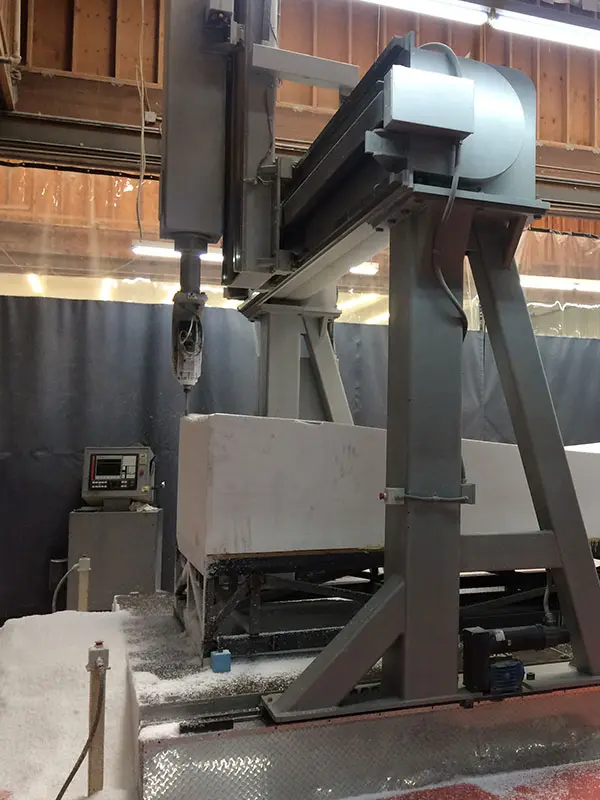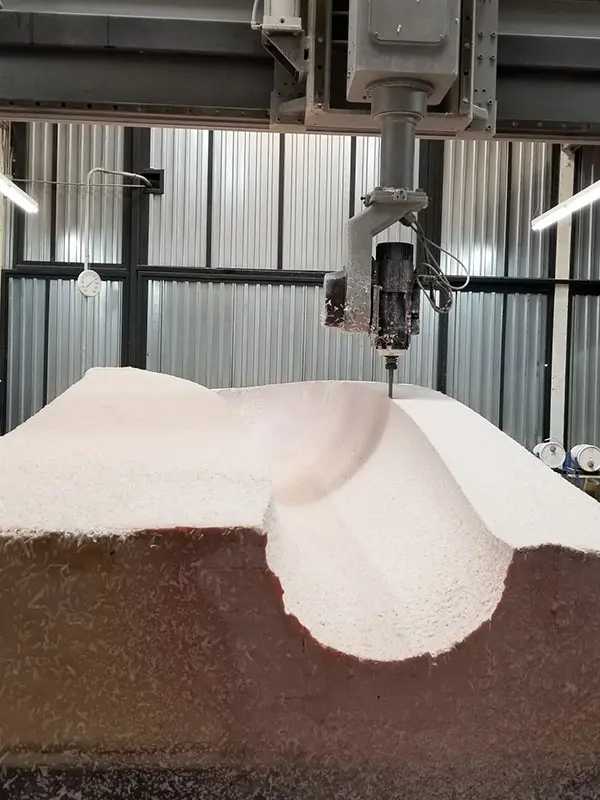In 2018, ADM Works was contracted to engineer, build, and aid in the installation of the “Silver Surfer” fine arts project. World-renowned conceptual artist Inigo Manglano Ovalle was commissioned to make the sculpture for Texas A&M University’s the then new Zachry Engineering Education Complex. According to Texas A&M, “the artwork can be said to be a meditation on the fluid dynamics of liquids and gas, or [the] revolving topology of surfaces, or vortex mechanics, or the forces of comprehension and tension, and it certainly calls to mind aeronautical design, and yet it is not confined to any single area of study.” There are no visible external fasteners supporting the “Silver Surfer”, as its supports rely instead on the three cables coming out of the very top of the sculpture, which also give the observer the impression that the sculpture is levitating.
Artist:
Inigo Manglano Ovalle
Client:
Texas A&M University
Year: 2018
Category:
Fine Arts
Prior to the construction of any parts, ADM Works’ engineers worked closely with Inigo Manglano Ovalle to make sure that the surfaces meshed together perfectly and were conducive to the planned manufacturing processes. Upon approval of the final surfaces by the artist, the team entered into the mold-making stage. The inner support structure and the support cable routing were further developed for the various stages of the erection sequence. Due to the size and complexity of the piece, it could not have been made in one piece as it was much larger than any standard university double door, so it was designed to be split up into six different pieces made from two molds each. Constrained by weight, carbon fiber composite was selected as the material of choice for the outer skin surfaces, while the inner ribs utilized carbon fiber and structural foam core sandwich panels in order to reach a maximum strength to weight ratio. Even so, through subsequent calculations, it was clear that the desired weight objective was unattainable for the current iteration, so speed holes were placed throughout the entire inner structure at strategic locations to produce a final model that was 15% under the target aggregate weight. Inside the molds that also doubled as assembly fixtures, the inner structures were bonded together and cable routing tubing was ran throughout; inner structural elements necessary for attaching the support cables inside cables were also assembled at this point. With all the inner components installed, the team then bonded the second skin onto the molds and then proceeded to de-mold the part.


Shown above: the mold machining process for the “Silver Surfer.”

With the sculpture being made out of six pieces, it was critical to make sure that everything lined up perfectly, otherwise the light would not bend around the sculpture in the way that Mr. Ovalle had intended. In order to safeguard the desires of the artist, the team created various fixtures that were able to hold the six sculptures together in different positions where it was possible to surface them all together. The locating features were also bonded in; these were used to keep the various segments in the correct positions. With all the surfacing done, the .001” thin aluminum foil squares were painstakingly bonded onto the surface. Since the surface was very susceptible to damage, transportation cradles were designed that also doubled as assembly fixtures.
Once the parts had arrived safely to the Texas A&M campus, the lower three segments were erected in their upright positions using the cable hoists coming from the ceiling, and then moved out of the way for use in subsequent steps. The upper segments were now lifted one by one, and then through a choreographed cable transfer, the three upper segments were all suspended from three cables and connected together. The three lower segments were placed underneath and the permanent installation cables were ran all the way through the upper segments to the lower segments and then attached from the inside using some swages and pins connected to the structure. Finally, with one synchronized movement, the sculpture was lifted at the same time from all three cables and lifted to the correct height, ready to inspire the university’s future engineers for years to come.